What Is This Thing Called Love, Part 1, by British Modern Jazz by tajmahalfoxtrot1
“The rostrum was surrounded with people who were content to stand and watch and that semi-circle kept on increasing by the minute till a stage was reached when people had to stand on chairs to see the bandsmen. The crowd liked the music and they communicated their appreciation by yelling their heads off which in turn exhorted the musicians no end…The consensus of opinion had it that Bombay had not heard better music in many moon.”
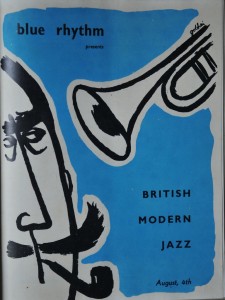 The excitement that Coover Guzdar described at the Ballroom of the Taj Mahal Hotel in downtown Bombay on the evening of August 4, 1953, is very audible on the two-part recording of What Is This Thing Called Love above and below. Between trumpet phrases and piano licks, you can hear 500 Bombay fans cheering, clapping and generally being appreciative of the band that had been styled the Swingin’ Britons.
The excitement that Coover Guzdar described at the Ballroom of the Taj Mahal Hotel in downtown Bombay on the evening of August 4, 1953, is very audible on the two-part recording of What Is This Thing Called Love above and below. Between trumpet phrases and piano licks, you can hear 500 Bombay fans cheering, clapping and generally being appreciative of the band that had been styled the Swingin’ Britons.
The group had been cobbled together by the editorial board of Blue Rhythm, a magazine that had made its appearance a year earlier. Its editors – Guzdar, Niranjan Jhaveri and Jehangir Dalal – were determined not only to give Bombay the opportunity to read about the music they loved, they also organised concerts to allow the city learn about the latest directions in which jazz was headed.
The British Modern Jazz concert was part of this effort. The five Swingin’ Britons were actually members of groups that had been hired by hotels in different parts of the country. Vibraphonist Victor Feldman, trumpet player Dave Usden and bassist Pete Blannin were with the Eddie Carroll band, which was playing a season in Delhi. Pianist Damian Robinson and drummer Fred Manton were with the Harry Parry band in Calcutta. (In a few years, Feldman would emigrate to the US and would become a well-regarded piano player.)
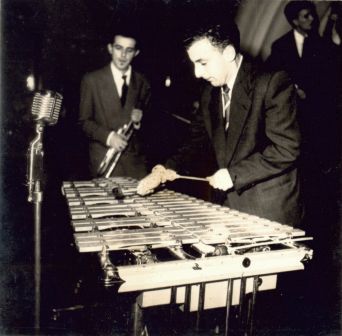 “BR has always recognised the fact that Bombay is most alive to good in-the-flesh music and also perhaps the most starved,” Guzdar wrote in Blue Rhythm magazine later. “We were also aware of the presence of India of some excellent musicians who were fed up to the gills of playing the kind of ‘rickey tickey’ music their employers demanded night after night…BR flew out five such musicians…both for the entertainment of the Bombay public and so that the musicians themselves could temporarily shed the cloak of commercialism which they had been compelled to wear. As things transpired, matters turned out as expected.”
“BR has always recognised the fact that Bombay is most alive to good in-the-flesh music and also perhaps the most starved,” Guzdar wrote in Blue Rhythm magazine later. “We were also aware of the presence of India of some excellent musicians who were fed up to the gills of playing the kind of ‘rickey tickey’ music their employers demanded night after night…BR flew out five such musicians…both for the entertainment of the Bombay public and so that the musicians themselves could temporarily shed the cloak of commercialism which they had been compelled to wear. As things transpired, matters turned out as expected.”
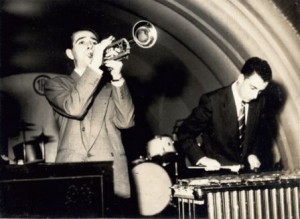 The organisers had sold 450 tickets in advance and more were snapped up when the gates opened at 8pm. The evening started with a performance by Hal Green, the Anglo-Indian reed player. Then the Britons came on, playing standards like Lester Leaps In and Night in Tunisia. The floor was crowded with dancers. By the time the Swingin’ Britons came back for their second set, they were steaming. Though the drums seemed too loud because of a faulty microphone positioning, the crowd was all ears and cheers.
The organisers had sold 450 tickets in advance and more were snapped up when the gates opened at 8pm. The evening started with a performance by Hal Green, the Anglo-Indian reed player. Then the Britons came on, playing standards like Lester Leaps In and Night in Tunisia. The floor was crowded with dancers. By the time the Swingin’ Britons came back for their second set, they were steaming. Though the drums seemed too loud because of a faulty microphone positioning, the crowd was all ears and cheers.
This recording was made using a portable Grundig owned by Niranjan Jhaveri. It was later released as a 78 RPM, with a label drawn by the as-yet-unknown artist Mehlli Gohbai (he also drew the quirky figure on the programme cover.) The organisers hoped that the record would be the first entry in a long Blue Rhythm music catalogue, but then real life caught up with them. They soon found themselves too wrapped up with work and studies to devote time to their jazz project. The team disbanded shortly after the Swingin’ Britons came to Bombay. They had published seven issues of the Blue Rhythm magazine, organised two concerts (the other was by the Parsi saxophonist Rudy Cotton) and produced one record.
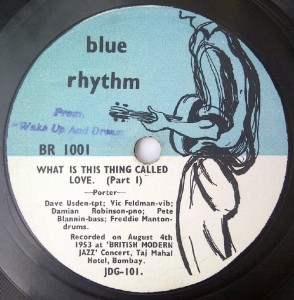 Despite the brevity of its existence, Blue Rhythm had made its mark on Bombay’s cultural life. The last issue of the magazine, in September 1953, described what the concert had achieved. “The [Taj] Ballroom was a jumping joint filled with people who enjoyed every minute of the evening,” it reported. The concert, it said, “should also have given the local musicians an inkling about what modern jazz is all about and what it had to say”. Finally, through the British Modern Jazz session, “many avowed Dixieland fans had their ears opened to the more modern tendencies in jazz”.
Despite the brevity of its existence, Blue Rhythm had made its mark on Bombay’s cultural life. The last issue of the magazine, in September 1953, described what the concert had achieved. “The [Taj] Ballroom was a jumping joint filled with people who enjoyed every minute of the evening,” it reported. The concert, it said, “should also have given the local musicians an inkling about what modern jazz is all about and what it had to say”. Finally, through the British Modern Jazz session, “many avowed Dixieland fans had their ears opened to the more modern tendencies in jazz”.
[Thanks so Heiko Mohn for sharing these tracks and to Nakul Mehta for digging out photographs of the event.]
What Is This Thing Called Love, Part 2, by British Modern Jazz by tajmahalfoxtrot1


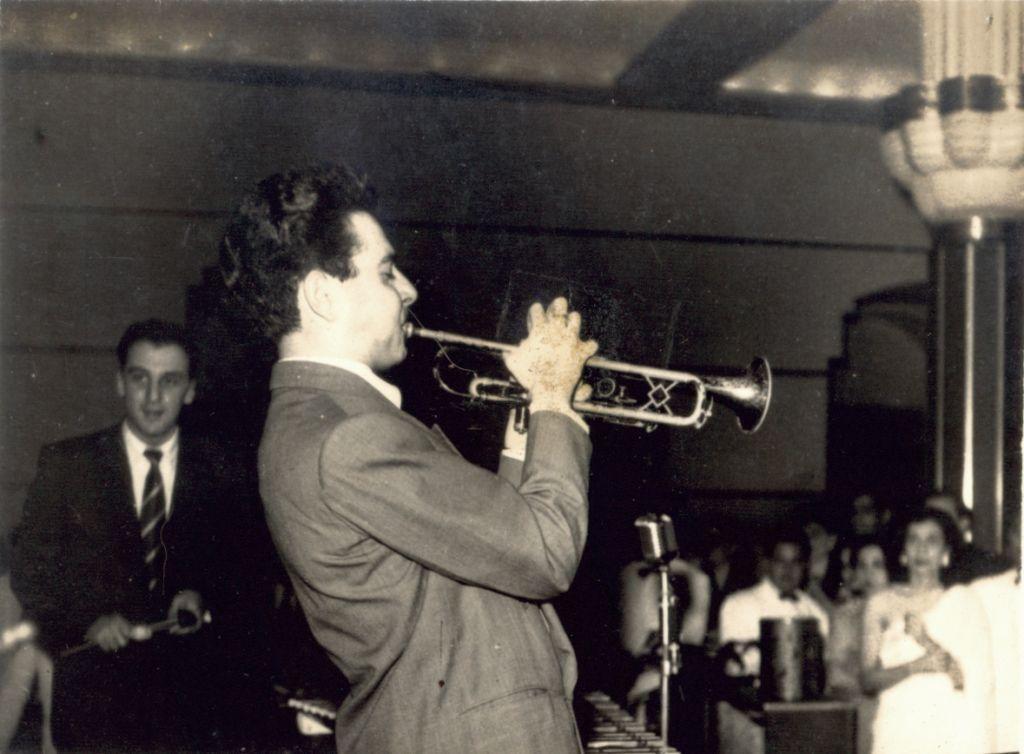
3 comments
Simply amazing that you pull out rare gems with such consistency Really super stuff This is probably the only picture published of Victor Feldman playing vibes in Bombay before he took off to become a sought after musician with Shelley Manne and Miles
Freddie Manton,the drummer here later moved to the USA where he also had a nice teaching practice in Fresno,Calif. .I was one of his many students . Freddie was/is an awesome drummer in Jazz and Rock.
I was also a student of Freddie. I believe he taught at MV Music in Fresno, Ca.